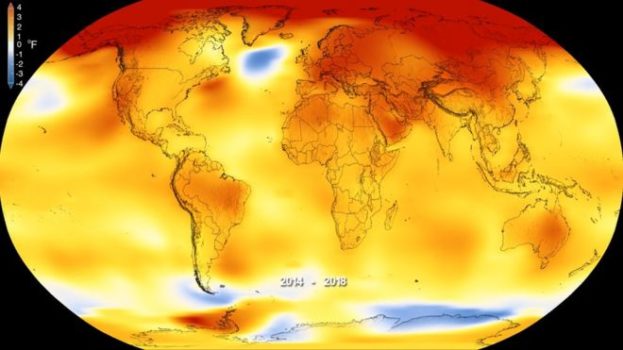
The world is in the middle of what is likely to be the warmest 10 years since records began in 1850, says the Met Office.
It’s forecasting that temperatures for each of the next five years are likely to be at or above 1C compared to pre-industrial levels.
There’s also a small chance that one of the next five years will see global temperatures temporarily go above 1.5C.
That’s seen as a critical threshold for climate change.
If the data matches the forecast, then the decade from 2014-2023 will be the warmest in more than 150 years of record keeping.
Will the forecast temperature rises bust the Paris climate agreement?
The Met Office says that 2015 was the first year in which the global annual average surface temperature reached 1C above the pre-industrial level, which is generally taken to mean the temperatures between 1850 and 1900.
Each year since then, the global average has hovered close to or above the 1C mark. Now, the Met Office says that trend is likely to continue or increase over the next five years.
“We’ve just made this year’s forecasts and they go out to 2023 and what they suggest is rapid warming globally,” Prof Adam Scaife, head of long term forecasting at the Met Office, told BBC News.
“By looking at individual years in that forecast we can now see for the first time, there is a risk of a temporary, and I repeat temporary, exceedance of the all-important 1.5C threshold level set out in the Paris climate agreement.”
Last October, UN scientists published a special report on the long-term impacts of a temperature rise of 1.5C.
They concluded that it would take a massive carbon cutting effort to keep the world from tipping over the limit by 2030. The Met Office analysis now says there’s a 10% chance of this happening within the next five years.
“It’s the first time the forecasts have shown a significant risk of exceedance – it is only temporary. We are talking about individual years fluctuating above the 1.5 degree level,” said Prof Scaife.
“But the fact that that can happen now due to a combination of general warming and the fluctuations due to things like El Niño events in the next few years does mean we are getting close to that threshold.”